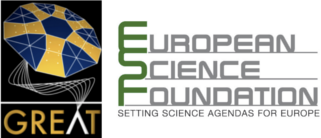Project Title: Improving the Distance Scale
Contact: Dr Gisella Clementini (gisella.clementini@oabo.inaf.it)
Further Details: http://www.bo.astro.it
Description: The Gaia data will be exploited by concentrating on the following main lines of research: 1) Use of the main-sequence fitting method to derive Cepheid and RR Lyrae distances. A homogeneous dataset both of observations and models to avoid systematic effects is crucial. 2) Observations and models of different types of pulsating stars in Galactic and extragalactic systems, providing a homogeneous DS for the local Universe, a valuable test for theoretical methods based on stellar evolution theory, and a calibration of secondary, more distant indicators. 3) secondary distance indicators, exploiting our expertise in stellar population synthesis methods and photometric techniques.
A secondment to UCAM will focus on the correct use and interpretation of the Gaia astrometric and photometric data, with specific application to star clusters and OB associations, and the information that can be derived from Gaia observations of those systems. Astrometric information extracted for groups of stars in small areas of the sky needs to be corrected for the error correlations in the underlying data. Combined with accurate ground-based photometry these data will also provide well-defined empirical calibration sequences in the Hertzsprung-Russell diagram, which can be used for fine adjustments of stellar models and distances.
Project Title: Open Clusters as Tracers of the Galactic Disk
Contact: Dr Antonella Vallenari (antonella.vallenari@oapd.inaf.it)
Further Details: http://www.pd.astro.it
Description: Open clusters (OCs) are important tracers of the young and intermediate-age stellar populations of the Galactic disc and its spiral arms. As ensembles, their distances, ages, and metallicities can be determined with much higher accuracy than those of individual stars, which will remain true also in the Gaia era. Gaia will measure proper motions (and distances) for individual stars in OCs with high precision (better than 1% for the nearby OCs and better than 10% for almost the entire OC family). Observations of a large sample of OCs (~1800 are catalogued) will make it possible to look for metallicity gradients in the Galactic disc, which are preserved better for bound stellar ensembles than for individual stars suffering from radial mixing. The ESR activity will focus on the study of OCs as tracers of the Galactic metallicity gradient, in synergy with the chemical tagging of other Galactic populations, obtaining complementary data to the Gaia distances and proper motions (e.g., chemical abundances), developing a new theoretical understanding and practical analysis tools in preparation of the Gaia mission. The specific objectives are to study (1) the homogeneous, detailed chemical composition of OC stars using ground-based high-resolution spectroscopy (Gaia spectroscopy is limited to OCs, within about 1 kpc), (2) the internal kinematics (via radial velocities) and binary fractions, important for cluster modelling, (3) obscured/ highly reddened clusters (nearly inaccessible to Gaia) to get a complete census of the OC population and a better definition of the disc properties, (4) OCs possibly associated with overdensities to test the merging scenario, and (5) precise photometry, new or homogenized from, e.g., all-sky surveys, to determine the ages of the clusters, important for understanding the chemical enrichment history; this is also an ideal test for stellar evolutionary models
Important Eligibility Information concerning ESRs:
Early-stage researchers are those who are, at the time of selection by the host institution, in the first four years (full time equivalent) of their research careers. This is measured from the date when they obtained the degree which formally entitles them to embark on a doctorate, either in the country in which the degree was obtained or in the country in which the research training is provided, irrespective of whether or not a doctorate was envisaged. Researchers are normally required to undertake trans-national mobility (i.e. move from one country to another) when taking up their appointment. One general rule applies to the appointment of researchers in a network:At the time of selection by the host organisation, researchers must not have resided or carried out their main activity (work, studies, etc.) in the country of their host organisation for more than 12 months in the 3 years immediately prior to their recruitment. Short stays, such as holidays, are not taken into account. As far as international European interest organisations or international organisations are concerned, this rule does not apply to the hosting of eligible researchers, however the appointed researcher must not have spent more than 12 months in the 3 years immediately prior to the selection by the host organisation in the same appointing organisation.

